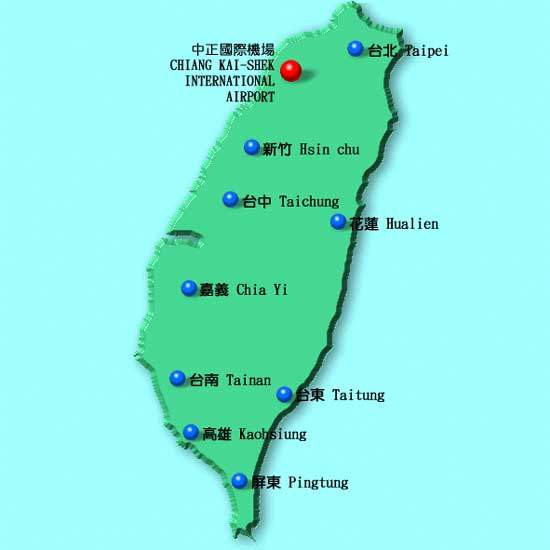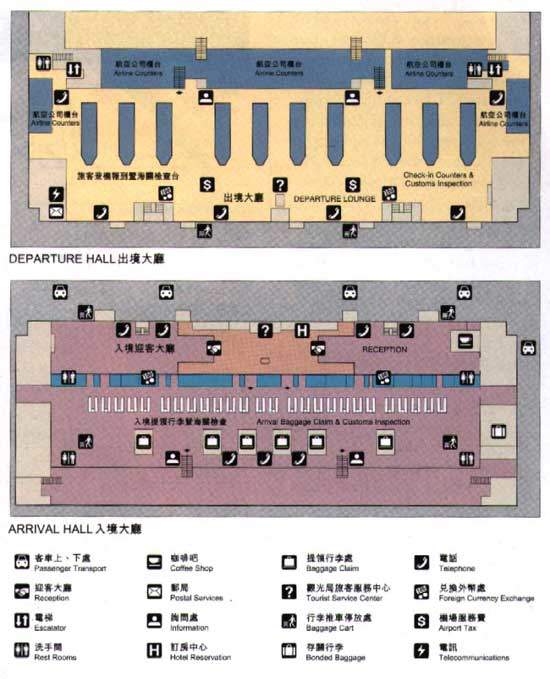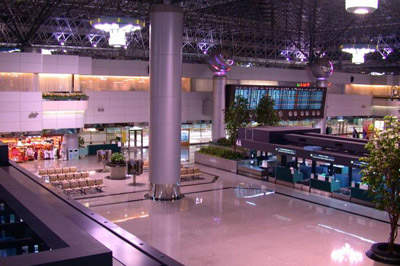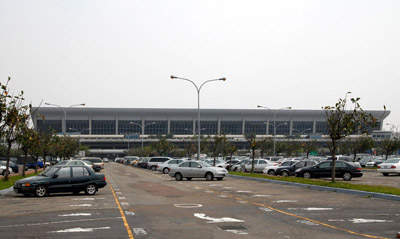Taiwan Taoyuan International Airport (TTIA) is situated in Taoyuan County, Taiwan. The airport is operated by the Civil Aeronautics Administration.
TTIA was formerly known as Chiang Kai-shek (CKS) Taipei International Airport. The Executive Yuan of the former president Chen Shui-bian’s administration officially approved the change of the airport name to Taiwan Taoyuan International Airport on 6 September 2006.
It is currently one of the busiest airports in the world and handled approximately 42 million passengers in 2016.
The new Terminal 3 is planned to be completed at the airport by 2020. It will have the capacity to handle 43 million passengers a year, and will enable the airport to handle up to 59.8 million passengers and 4.48 million tonnes of cargo a year by 2030.
Taoyuan terminal 1
Opened in 1979, Terminal 1 was originally designed to handle eight million passengers a year, including arrivals, departures and transits. Repeated upgrades have increased this capacity to more than 17 million passengers a year.
Terminal 1 has been renovated and all the works were completed by July 2013. The $57.4m renovation project included construction of new parking garages, and renovation of the arrival and departure halls. The terminal’s capacity increased upon completion of the project.
This dramatic expansion led to more aircraft using TTIA facilities, more frequent flights on an expanded route network, and reduced processing times for passengers and cargo.
The plan to build Terminal 2 was conceived in 1989 because of the massive anticipated increases in demand for aviation services. The airport has two runways; 6/24 (3,350m) and 5/23 (3,660m).
Development of Terminal 2
Terminal 2 was opened in July 2000 with only half of the gates in operation. Costing a total of $729m, the expansion project took nine years to build and was a central part of the government’s plans to promote Taiwan as an Asia-Pacific air transportation hub.
Terminal 2 has four floors above ground and two floors below ground. It is 47.6m-tall and has a floor area of more than 300,000m², including the north concourse. The terminal was designed to handle 17 million passengers a year and has 20 gates, including ten on the north concourse, which are capable of handling B-747 or larger aircraft. In addition, seven remote parking stands provide extra parking spaces as required.
Terminal 2 sits on a site measuring 7.5 million square feet, and can hold up to 4,000 cars in the parking lot. It can handle 10,000 passengers a day while still only using half of the available space.
The south concourse is used by nine airlines. The terminal was not fully operational until late 2002, when the north concourse was opened. At that point, the passenger load was evenly split between Terminal 1 and Terminal 2 with an estimated 30,000 passengers a day via each terminal. Terminal 2 had ten gates open in 2000, and ten more were in use by 2002.
Alarge, bright and airy building, Terminal 2 contains two duty-free shops, three restaurants, three snack bars, more than ten stores (placing an emphasis on traditional Taiwanese products and artefacts), a business centre with full internet connection and a transit hotel with 21 fully equipped rooms.
The facility was equipped with a centralised computer system, which has increased efficiency and speed at the centre.
Furthermore, new automated baggage handling was installed, which reduces the time it takes passengers to disembark the plane, receive their baggage and leave the airport.
Due to many transit passengers transferring between Terminal 1 and Terminal 2, a free shuttle bus service runs every 15min from both terminals. An elevated railway, also known as a people mover system (PMS), became operational in June 2002 to provide more convenient ground transportation to transit passengers.
Terminal 2 initially handled 3.4 million passengers a year, but this number quickly rose to match the capacity of Terminal 1.
Details of Terminal 3
A new, planned $1.5bn Terminal 3 will cover an area of 421,000m² and the construction began in August 2016. The project is divided into three phases and is expected to be complete by the end of 2020. The first phase comprises choosing a general consultancy service and is followed by design and construction in the next two phases.
In February 2013, a joint venture between NACO, T Y Lin International and Parsons Brinckerhoff was awarded a €33m consultancy contract for the development of Terminal 3. The joint venture provides planning, tender preparation, design review and professional construction management services for the terminal.
A joint venture comprising ARUP, Rogers Stirk Harbour + Partners, CECI and FCA was awarded a contract for the design and construction of the new terminal, in January 2016.
Terminal 3 will be linked to Terminal 2 and the in-between area will include parking, ground transportation centre, and commercial real estate with entertainment, shopping and conference centres. The terminals will also include stations that will be part of the regional light rail system.
In addition to the construction of Terminal 3, the project will also include development of concourses, aprons, service roads, ground service and operations facilities, taxiway system and new passenger access roads.
Ground transportation
Buses and taxis operate to and from the airport. A Skytrain service will also be provided for convenient transportation. A rapid transit line connecting the airport to Taipei City is under construction. The line will link Terminals 1, 2 and upcoming Terminal 3 together.










